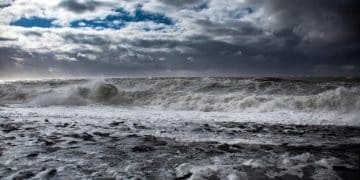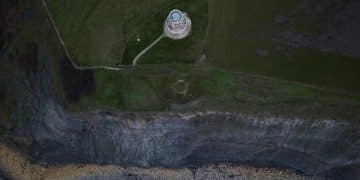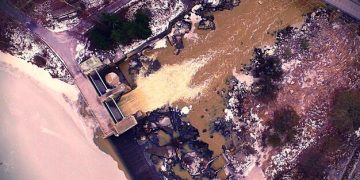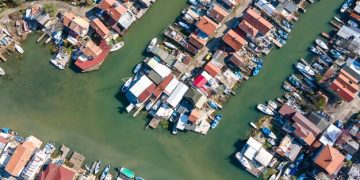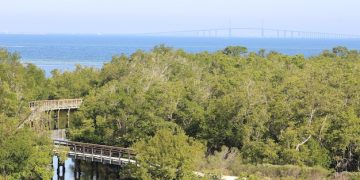Coastal Erosion Mitigation Strategies: A 5-Year Review of Success Rates in the US
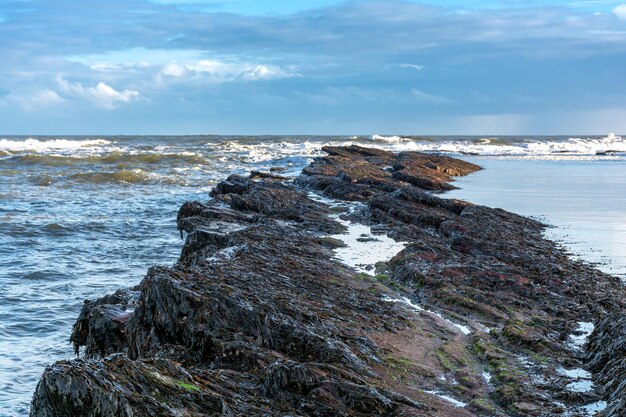
Coastal erosion mitigation strategies in the US have demonstrated varied success rates over the past five years, with nature-based solutions increasingly gaining recognition for their cost-effectiveness and ecological benefits compared to traditional hard infrastructure.
As sea levels rise and extreme weather events intensify, coastal communities across the United States face persistent threats from erosion. Understanding the effectiveness of various interventions is crucial for future resilience. This article offers a comprehensive Coastal Erosion Mitigation Strategies: A 5-Year Review of Success Rates in the US, examining what has worked, what hasn’t, and why, providing critical insights for policymakers, engineers, and coastal residents alike.
Understanding Coastal Erosion and Its Impact
Coastal erosion, a natural geological process, has been significantly accelerated by climate change and human activities. It involves the removal of land by wave action, currents, tides, wind, and other forces, leading to the loss of beaches, dunes, and coastal properties. In the US, this phenomenon poses a substantial threat to infrastructure, ecosystems, and economies along both ocean and Great Lakes shorelines. The past five years have seen an urgent need to assess and refine mitigation efforts as the impacts become more pronounced and frequent.
The immediate consequences of coastal erosion are often visible, such as damaged homes and roadways, but the long-term effects can be far more insidious. These include the destruction of vital habitats for marine life and birds, salinization of freshwater aquifers, and disruption of local economies reliant on tourism and fishing. Coastal communities, from bustling urban centers to serene fishing villages, are grappling with the complex challenge of protecting their assets while maintaining ecological balance. The interplay between natural forces and human development dictates the severity and pace of erosion, making effective mitigation a multi-faceted endeavor that extends beyond mere engineering.
The dynamic nature of coastlines means that what works in one area might be ineffective or even detrimental in another. For instance, areas with soft sediment shores react differently to erosion than those with rocky cliffs. Furthermore, human modifications like the construction of jetties or seawalls, while designed to protect specific locations, can inadvertently accelerate erosion down-current. This necessitates a holistic understanding of coastal processes and a tailored approach to mitigation, moving away from one-size-fits-all solutions.
Over the past five years, the recognition of these complexities has grown, leading to a shift in how coastal erosion is perceived and addressed. No longer is it seen solely as an engineering problem, but rather as an ecological and socio-economic challenge requiring interdisciplinary collaboration and adaptive management. This broader perspective has influenced the types of mitigation strategies being implemented, with a greater emphasis on sustainable, long-term solutions that work with natural systems, rather than against them. The review of success rates therefore must consider not only immediate protection but also ecological integrity and community resilience.
Traditional Hard Structures: A Five-Year Performance Review
For decades, hard structures have been the go-to solution for coastal protection, employing engineering principles to physically block or redirect erosive forces. These include seawalls, bulkheads, revetments, and groins. Seawalls, massive concrete or rock barriers constructed parallel to the shoreline, aim to completely stop the advance of the sea. Revetments, similar to seawalls but sloped and made of rock or concrete armor, dissipate wave energy rather than reflecting it directly. Groins are structures built perpendicular to the shore, designed to trap sand and widen beaches.
The performance of these hard structures over the past five years has yielded mixed results, demonstrating both their strengths and significant limitations. In many instances, particularly in highly developed areas, seawalls and revetments have successfully protected infrastructure immediately behind them from direct wave attack. For example, some heavily reinforced sections of the Pacific Coast and parts of Florida’s Atlantic shoreline have maintained their integrity against significant storm surges. These structures often provide a sense of security to property owners and can be critical in areas where land behind the eroding shoreline is highly valuable and cannot be allowed to recede.
However, the efficacy of hard structures comes with substantial trade-offs. A recurring observation from the past five years is the ‘coastal squeeze’ phenomenon: while the structure protects the land behind it, it often accelerates erosion on adjacent, unprotected beaches, and can also lead to the loss of the beach directly in front of the structure. This is because reflected wave energy can scour the sand away, leading to a narrower or entirely absent beach face. This has been particularly evident along segments of the Outer Banks in North Carolina and parts of California’s coast, where seawalls have been implicated in the disappearance of recreational beaches.
Groins, while sometimes effective in localized beach nourishment, have also shown variable success. They can starve down-drift beaches of sand, necessitating further interventions in those areas. The five-year period has highlighted that these structures require continuous maintenance, with high costs associated with repairs and reinforcement, especially after major storm events. Moreover, their environmental impact, including disruption of natural sediment transport and alteration of nearshore habitats, has increasingly come under scrutiny. The review consistently indicates that while hard structures offer immediate, localized protection, their long-term sustainability and broader ecological implications present growing concerns.
Emergence and Success of Nature-Based Solutions
Over the last five years, there has been a considerable shift towards incorporating nature-based solutions (NBS) into coastal erosion mitigation strategies across the US. These approaches leverage natural processes and ecosystems to protect shorelines, often providing additional environmental benefits. Examples include dune restoration, wetland creation, oyster reefs, living shorelines, and strategic sediment placement (beach nourishment). Unlike hard structures, which often disrupt natural processes, NBS work with them, enhancing resilience and biodiversity.
Dune restoration, involving the planting of native vegetation like sea oats and the installation of sand fences, has shown promising results. In states like Florida and North Carolina, actively managed dune systems have proven remarkably effective in absorbing wave energy and providing a natural barrier against storm surges, often recovering naturally after minor events. The success rate is particularly high when these efforts are combined with public education to prevent trampling and ensure careful management. These natural buffers not only protect infrastructure but also create essential habitat for nesting birds and other wildlife, demonstrating their multi-functional value.
Living shorelines, which involve the use of natural materials like oyster shells, native plants, and sometimes rock structures, to stabilize eroding estuarine and bay shorelines, have gained significant traction. States such as Maryland, Virginia, and Louisiana have been at the forefront of implementing these designs. A five-year review indicates that living shorelines are effective in reducing wave energy, trapping sediment, and improving water quality, while also supporting diverse aquatic life. Their success is attributed to their adaptability to changing conditions and their ability to grow and self-repair over time, offering a more sustainable alternative to bulkheads.
Beach nourishment, the process of adding sand to an eroding beach, remains a widely used NBS, especially for maintaining recreational beaches. While it requires periodic re-application, the five-year data suggests that when properly executed with appropriate sand sources and regular maintenance, it can effectively widen beaches and provide protection. Significant nourishment projects along the Gulf and Atlantic Coasts have demonstrated their capacity to reduce storm damage to upland properties. However, challenges remain in securing long-term funding and identifying environmentally suitable sand borrow areas.
The growing adoption of oyster reefs as natural breakwaters, particularly in the Gulf of Mexico and Chesapeake Bay, represents another notable success. These reefs dissipate wave energy, stabilize sediments, and provide critical habitat. Their self-sustaining nature and ecological benefits, like water filtration, make them an attractive option. The overall trend over the past five years points to an increasing recognition of NBS as highly effective, cost-efficient in the long run, and environmentally superior solutions, often preferred for their ability to deliver multiple co-benefits beyond just erosion control.
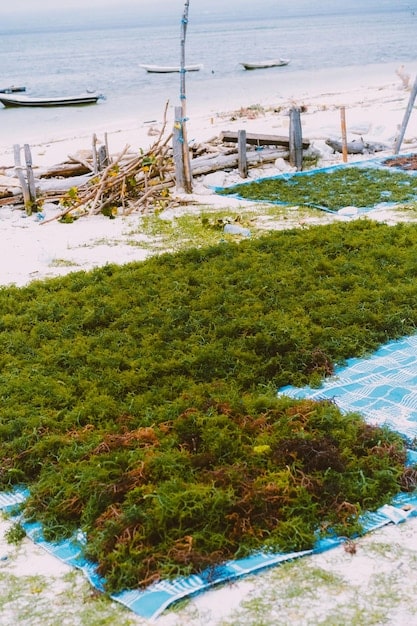
Hybrid Approaches: Blending the Best of Both Worlds
As the understanding of coastal dynamics evolves, so too do the strategies for mitigation. The past five years have seen a growing interest and implementation of hybrid approaches, which cleverly combine elements of traditional hard structures with nature-based solutions. This synergistic approach aims to harness the immediate protection offered by engineering while integrating the long-term sustainability and ecological benefits of natural systems. The rationale is to create solutions that are more resilient, adaptable, and cost-effective over their lifespan.
One common hybrid strategy involves coupling traditional structures with ecological restoration. For example, a relatively smaller rock revetment or offshore breakwater might be constructed to reduce wave energy, behind which a living shoreline or dune system is established. This has been observed in various locations, where engineered structures provide the initial line of defense, allowing natural systems to establish and mature without being overwhelmed by intense wave action. The success of this combination lies in the ability of the hard structure to absorb the initial brunt of storm energy, thereby protecting the more vulnerable natural elements.
Another popular hybrid involves the strategic use of geotextile tubes filled with sand, which serve as a more flexible, subsurface barrier, often combined with beach nourishment and dune vegetation. These tubes can provide structural integrity while being less visually intrusive than concrete seawalls. Over the past five years, projects along the Gulf Coast, particularly in Texas and Louisiana, have demonstrated how these buried structures can provide a stable foundation for restored dunes and beaches, enhancing their longevity and effectiveness against erosion. This approach offers a more “soft” engineering solution than rigid concrete.
The creation of artificial islands or strategic placement of submerged breakwaters to reduce wave height and energy, coupled with subsequent beach nourishment or wetland creation, also falls under hybrid methodologies. These offshore structures allow calmer conditions near the shore, fostering the accretion of sand and the establishment of natural vegetation. While more complex and costly to implement initially, performance reviews over recent years suggest that these large-scale hybrid projects can deliver robust, long-term protection and ecological restoration, making them suitable for critical areas where a high degree of protection is required.
The overarching theme for successful hybrid approaches in the last half-decade has been their adaptive capacity. They are designed to evolve with the changing coastal environment, allowing for modifications and enhancements to both the engineered and natural components as needed. This adaptability, combined with their ability to offer both immediate protection and long-term ecological benefits, positions hybrid solutions as a key trend in future coastal resilience planning. They represent a pragmatic evolution, acknowledging the need for engineering where necessary, but always seeking to work in harmony with natural coastal processes.
Monitoring and Adaptive Management: Key to Documented Success
The success of any coastal erosion mitigation strategy, whether hard, nature-based, or hybrid, hinges significantly on robust monitoring and an adaptive management framework. Over the past five years, the US has seen an increased emphasis on these practices, moving beyond mere implementation to active evaluation and refinement of projects. This continuous feedback loop is critical given the dynamic nature of coastal environments and the long-term impacts of climate change. Without systematic monitoring, it’s virtually impossible to accurately gauge success rates or understand why some strategies work better than others.
Comprehensive monitoring programs typically involve regular bathymetric and topographic surveys, aerial imagery, satellite data analysis, and ecological assessments. These tools allow scientists and engineers to track changes in shoreline position, beach volume, sediment transport patterns, and habitat health. For example, many state coastal management programs now mandate post-project monitoring for beach nourishment or living shoreline installations, often spanning several years, to ensure that the desired outcomes are being achieved and to inform future projects. This data is invaluable for quantifying sand retention, habitat colonization, and structural integrity.
Adaptive management, a systematic approach for improving resource management by learning from management outcomes, is intrinsically linked to effective monitoring. It recognizes that coastal systems are complex and that initial interventions may not always perform as expected. Therefore, decisions are made in stages, with opportunities to adjust strategies based on real-world data and observations. This iterative process has proven particularly beneficial for nature-based solutions, which often require time to establish and may need fine-tuning, such as additional planting or minor re-grading.
A compelling example of adaptive management’s value can be seen in several large-scale resilience projects along the Gulf Coast. Initial designs for marsh restoration, for instance, might be modified based on early signs of excessive wave energy or insufficient sediment accretion, leading to the strategic placement of temporary breakwaters or additional sediment input. This flexibility, enabled by consistent monitoring data, allows projects to correct course before major failures occur, ultimately enhancing their long-term success rates.
The past five years have clearly demonstrated that projects that incorporate strong monitoring protocols and an adaptive management mindset consistently outperform those that do not. This proactive approach allows coastal managers to not only react to unforeseen challenges but also to optimize resource allocation, ensuring that investments in coastal protection yield the highest possible returns. It marks a critical evolution in coastal engineering and management, shifting from static solutions to dynamic, learning-based interventions that are better equipped to face future environmental uncertainties.
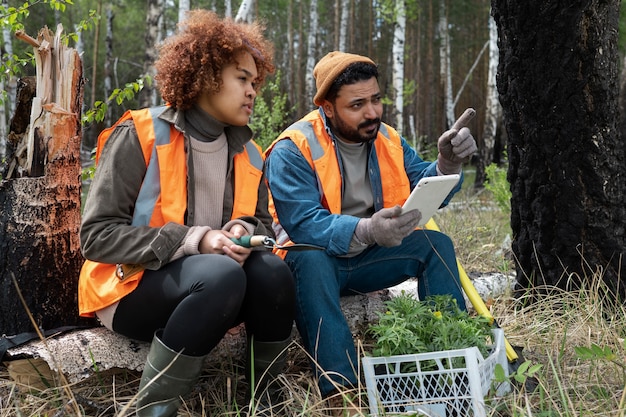
Challenges and Future Directions in Mitigation
Despite advancements in coastal erosion mitigation strategies over the last five years, significant challenges persist, necessitating continuous innovation and adaptation. Fundamental issues include the escalating costs of large-scale projects, the complexities of land ownership and regulatory frameworks, and the long-term uncertainties associated with climate change impacts like accelerated sea level rise and increased storm intensity. Addressing these foundational challenges will be crucial for improving success rates in the coming decades.
Funding remains a primary hurdle. Beach nourishment, while effective, is a recurring expense, and even nature-based solutions require substantial initial investment. Securing consistent federal, state, and local funding for ongoing maintenance and new projects is a perpetual struggle. Furthermore, the economic valuation of ecosystems services provided by nature-based solutions, though increasingly recognized, is not always fully integrated into cost-benefit analyses, potentially skewing decisions towards traditional engineering solutions that may be less sustainable in the long run.
Regulatory complexity also poses a formidable barrier. Permitting processes for coastal projects can be lengthy and intricate, involving multiple agencies at various government levels, each with their own set of rules and environmental considerations. This can delay critical projects, particularly those involving innovative or cross-jurisdictional approaches. Streamlining these processes while ensuring environmental rigor will be a key area for improvement. Land ownership, especially along private shorelines, adds another layer of complication, often leading to fragmented or contentious mitigation efforts.
Looking ahead, a major focus will be on predictive modeling and risk assessment. Improved forecasting of erosion rates, storm impacts, and sea level rise scenarios will enable more proactive and strategic planning. Investing in sophisticated geospatial tools and data analytics can help identify vulnerable areas with greater precision, allowing for targeted and cost-effective interventions. This involves not just physical data but also socio-economic vulnerabilities, moving towards a more comprehensive risk management approach.
Another critical future direction involves fostering greater community engagement and education. Sustainable coastal resilience requires buy-in from local residents, businesses, and policymakers. Educating communities about the benefits of nature-based solutions, the limitations of traditional approaches, and the importance of adapting to changing coastlines can build consensus and support for long-term strategies. Finally, continued research into novel materials and techniques, combined with international collaboration to share best practices, will ensure that the US remains at the forefront of effective coastal erosion mitigation. The journey towards resilient coastlines is ongoing, demanding continuous learning, flexibility, and a commitment to integrated, sustainable solutions.
Policy and Regulatory Landscape: Driving Success and Adaptation
The policy and regulatory landscape plays a pivotal role in shaping the success and adaptation of coastal erosion mitigation strategies in the US. Over the past five years, there has been a noticeable evolution in how federal, state, and local governments approach coastal management, driven by increasing awareness of climate change impacts and the limitations of past strategies. This evolving framework influences everything from project permitting to funding allocation and the adoption of new methodologies.
At the federal level, agencies like the U.S. Army Corps of Engineers (USACE) and the National Oceanic and Atmospheric Administration (NOAA) have been instrumental. USACE, traditionally focused on large-scale infrastructure projects, has increasingly incorporated nature-based and hybrid solutions into its planning and design processes, particularly within their Civil Works program. This shift is evident in projects that emphasize ‘working with nature’ rather than solely relying on aggressive engineering. NOAA’s Coastal Management Program, through grants and technical assistance to states, promotes integrated coastal zone management, encouraging sustainable practices and resilience planning.
State-level policies and regulations vary significantly, often reflecting the unique coastal dynamics and political priorities of each state. States like Florida, California, and North Carolina, with extensive and vulnerable coastlines, have developed comprehensive coastal management acts and setback regulations to control development in high-hazard areas. The past five years have seen some states strengthen these regulations, while others have explored innovative permitting for living shorelines, making it easier for property owners to implement these ecologically beneficial solutions compared to traditional bulkheads.
A growing trend is the interagency collaboration and the development of regional strategies. Recognizing that coastal erosion transcends political boundaries, there’s increased cooperation between neighboring states and federal agencies to address regional sediment management issues and shared vulnerabilities. Initiatives focusing on sediment budgets and regional master plans aim to coordinate efforts, reduce conflicts, and maximize the effectiveness of mitigation investments across broader geographic areas. This integrated approach helps to circumvent fragmented, localized solutions that can inadvertently exacerbate problems elsewhere.
However, challenges remain within the policy arena. Conflicting mandates between different agencies or levels of government can still hinder progress. Furthermore, while there’s a push for nature-based solutions, regulatory frameworks sometimes lag behind, making it difficult to permit or fund such innovative projects as easily as traditional ones. The future success of coastal erosion mitigation will heavily rely on these regulatory bodies continually adapting, streamlining processes, and creating incentives for the widespread adoption of resilient, sustainable, and ecologically sound approaches that align with the long-term realities of a changing climate.
| Key Point | Brief Description |
|---|---|
| 📊 Varied Success | Hard structures protect locally but can harm adjacent areas; nature-based solutions offer broader benefits. |
| 🌱 Nature-Based Rise | Dunes, living shorelines, and oyster reefs show increasing effectiveness and ecological value. |
| 🔄 Adaptive Management | Continuous monitoring and flexibility are crucial for project optimization and long-term resilience. |
| 🧩 Hybrid Solutions | Combining hard structures with natural elements offers robust and sustainable protection. |
Frequently Asked Questions about Coastal Erosion Mitigation
Coastal erosion in the US is primarily driven by natural processes like wave action, currents, and storms, often exacerbated by human activities such as coastal development and sand mining. Critically, climate change, leading to rising sea levels and more intense storm events, significantly accelerates these erosional trends, stressing existing mitigation efforts and requiring adaptable solutions.
Hard structures (e.g., seawalls) offer immediate, localized protection for upland property but can lead to beach loss and erosion down-coast. Nature-based solutions (e.g., dunes, living shorelines) work with natural processes, providing broader ecological benefits and often lower long-term maintenance, though they may take longer to establish and be vulnerable to extreme conditions if not designed robustly.
Adaptive management is an iterative decision-making process for coastal erosion projects. It involves implementing a strategy, monitoring its performance, and then using the gathered data to adjust or refine the strategy as needed, learning from successes and failures. This flexibility is crucial given the dynamic and often unpredictable nature of coastal environments and climate impacts.
Yes, hybrid mitigation strategies are increasingly common. These approaches combine the benefits of traditional hard structures with nature-based solutions. For instance, a small offshore breakwater may be paired with marsh restoration. This aims to provide both robust immediate protection and long-term ecological benefits, creating more resilient and sustainable coastal defenses that adapt to changing conditions.
Policy and funding are absolutely critical. Effective policies streamline permitting for sustainable solutions and encourage interagency collaboration. Consistent funding, from federal to local levels, ensures the implementation and ongoing maintenance of mitigation projects. Without supportive policies and adequate financial resources, even the most innovative strategies cannot achieve widespread and lasting success.
Conclusion
The five-year review of coastal erosion mitigation strategies in the US reveals a complex, evolving landscape. While traditional hard structures continue to offer localized protection for critical assets, their broader environmental impacts and long-term sustainability are increasingly understood. The significant rise and documented success of nature-based and hybrid solutions underscore a vital shift towards working with natural processes, yielding not only erosion control but also crucial ecological benefits. Continuous monitoring, adaptive management, and supportive policy frameworks are not merely beneficial but essential to navigating the escalating challenges posed by a changing climate. The lessons learned over the past half-decade provide invaluable insights, guiding future investments toward more resilient, sustainable, and holistically integrated coastal protection efforts across the nation.

